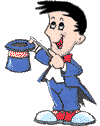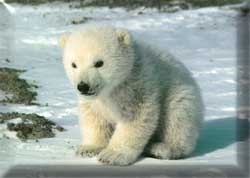ESE548 : The Class : Carrot Head : Pensive Pat : Online Reading 1 | ||||||
Online Reading:  Adaptive Skills
Adaptive Skills
Stop for a second and jot down a couple of lists. On
one side of your paper, list the things you learned in high school that
you are still using today. Remember to include things you learned as a part
of course ware, and also things you learned from being in the school, with
friends, maybe doing extra curricular activities.
Now, from that list, circle the things that you need for work. Next, make a list of the things you had to learn for your current job (Don't count being a student in this one).
If you have a typical list, you probably learned to communicate, to keyboard, to make friends, to read, to do math.
|
Learned in class
|
Not part of academics
|
| Reading Math Keyboarding Driving |
Communicating with friends How to get along Friendships Pastimes and hobbies |
There are a lot of things we learn from being together that are not in the academic curriculum, but that are certainly a part of school - the process of schooling. Every once in a while, a kid comes along who just doesn't seem to "catch on" to the social mores. For some reason they just don't seem to learn how to fit in, know when something is a joke, figure out how to keep from being picked on, how to make a best friend.
|
The essence
is to support student needs and dreams until there is success
--
|
 |
 I wish to have friends - so teach me how to make and keep friendships.
I wish to have friends - so teach me how to make and keep friendships. |
|
 I want to learn to cook - so find a way for me to do so safely and
competently.
I want to learn to cook - so find a way for me to do so safely and
competently. |
|
 I want to be a teacher - and since I will never make it through
a university program, help me learn to be an aide
I want to be a teacher - and since I will never make it through
a university program, help me learn to be an aide |
Social Skills and Adaptive Living
The average student learns how to use the phone, brush teeth, shave legs, order food without going over the amount of money, balance a check book, get a date, express disappointment appropriately, call in late to work. You may not even remember when you learned these things, who told you - or you may even remember picking it up from an older brother or sister, from a friend or roommate. It is second nature and almost intuitive to learn most of these things. . . that is for the average kid. But for some youngsters, it is not second nature.
Special needs youngsters may need support to learn the things we take for granted. The following list of social skills is adapted from Turnbull. These are things that we can include in a curriculum for special needs students to help them have better, more functional lives, get along with others successfully, and even gain employment more readily.
Communication skills - things to say, when to say them, how close to get to others, what to do with their hands, feet, bodies, while talking to others
Self care - hygiene, grooming, color awareness, clothing sense, wearing clothes in season, having a sense of style, appropriateness to activity
Home living skills - using the phone, taking care of clothes, staying clean, eating, cooking, staying safe in the home, stranger danger - answering the door, locking things, taking care of personal belongings
Social skills - vocabulary, spacing while communicating, table manners, knowing what to write in notes, when to write notes, call on the phone so as not to alienate others, how to know the difference between friendship and being nice
Community use - how to get a ride, OK parts of town, emergency calls, park use, times facilities are open, hours for services, places to get help, poor choices for loitering - dangerous parts of the community, when and how to display money,
Leisure - times and places for socializing, cost for activities, appropriate behavior during play or leisure, dangerous things to engage in or bad times to be involved in activities, active choices that the community finds appropriate, who to spend time with, not getting cheated, "hit upon" hurt, laughed at . . .
In addition to these things being important functions of a good transition program, there are resources in the community to help with transitions from school to adult status, from student to worker.
![]() You
may want to expand this list. A great place to look for additional ideas
about adaptive behavior is to look at the tests used to determine skill
levels. The Vineland and the Adaptive Behavior Scale
are two tests that are well done and commonly utilized.
You
may want to expand this list. A great place to look for additional ideas
about adaptive behavior is to look at the tests used to determine skill
levels. The Vineland and the Adaptive Behavior Scale
are two tests that are well done and commonly utilized.
![]()
Quick Note: Transitions
IDEA 97 makes some important strides in helping schools prepare youngsters to enter the adult world. By age 14, students are given assessments to help determine the best transitioning plan and a transition plan is written as part of the IEP.
By age 16, the IEP includes a more specific plan that includes the agencies that may be a part of securing employment, determining the need for guardianship, planning on vocational or further educational extensions.
One year before reaching adulthood, the school must be sure that the student understands IDEA, his or her rights and what it will mean to take responsibility for self as part of the IDEA team. It is not enough to just tell the student, there must be a way to show that every effort was made to help the youth understand the rights and responsibilities and it must be documented in the files.
![]() Feel
free to browse the web and find the actual legal language for this part
of IDEA or the American with Disabilities Act.
Feel
free to browse the web and find the actual legal language for this part
of IDEA or the American with Disabilities Act.
![]() It
might also be instructive to review Goals 2000; the set of expectations
developed by industry and the US president in the 1990's.
It
might also be instructive to review Goals 2000; the set of expectations
developed by industry and the US president in the 1990's.
![]()
|
Of course, some of us feel that students should be included in the IEP process from the time they are mere cubs. Who should be more a part of the team than the student for whom it is developed? How do students feel about participating? |
 |
Once you have finished you should:
Go on to Online Reading 2
or
Go back to Pensive Pat
E-mail J'Anne Affeld at Janne.Affeld@nau.edu
Course developed by J'Anne
& Martha
Affeld
![]()
Copyright © 2000
Northern Arizona University
ALL RIGHTS RESERVED